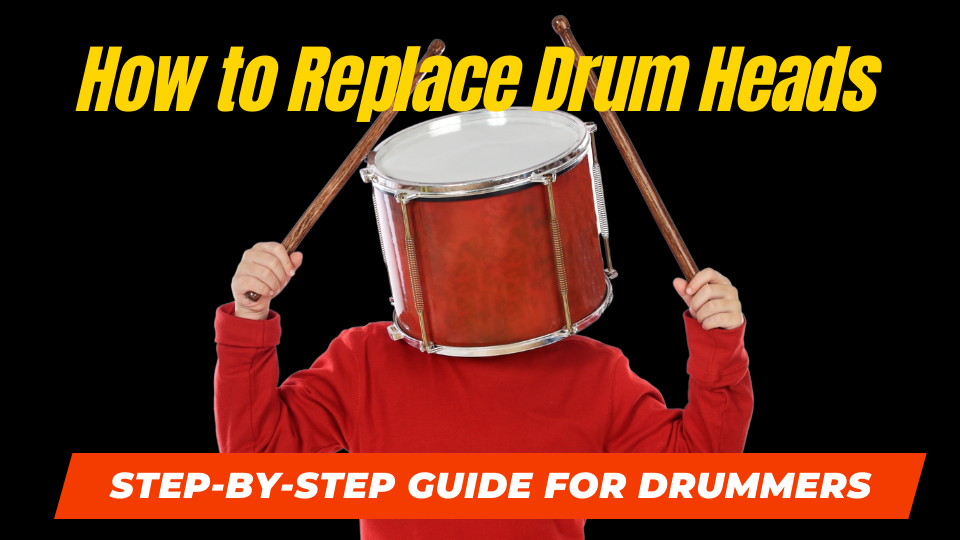This product list contains affiliate links. This means that at no extra cost to you, I may earn a commission if you use one of these links to make a purchase.
If you’re a drummer, you’ll know how crucial drum heads are to the overall sound quality and performance of your drums. As I’ve learned from my experiences, maintaining and replacing drum heads when necessary is key to a stellar drumming experience.
When we talk about how to replace drum heads, we’re delving into an important part of percussion instrument maintenance. If you’re new to this or even if you’re an experienced drummer looking to better understand your instrument, this guide is for you.
My focus is not just to walk you through the replacement process, but to help you truly understand drum head replacement and its impact on your sound. Trust me, once you master this skill, your drumming journey will be greatly enriched. So, let’s get started and dive into the world of drum head maintenance!
Key Takeaways
- 🥁 Recognize the signs that your drum heads need replacing such as change in sound quality, dents, pits or wrinkles on the surface, or inability to stay in tune. Consider how frequently and intensely you play your drums to identify when to replace them.
- 🧰 Gather essential tools for drum head replacement, which include a drum key for adjusting tension rods, a drum tuning device for fine tuning, and a soft cloth for cleaning.
- 🔄 Follow a detailed process to replace drum heads which involves removing the old head, installing the new one, and then fine tuning for optimal sound quality.
- ⚠️ Be ready to troubleshoot issues such as incorrect drum head size, uneven tension, and fine-tuning difficulties, which may occur during the head replacement process.
- 🔄 Proactively maintain your drum heads by keeping them clean, storing them properly and regularly tuning them. Also be aware of recommended brands for drum head replacement such as Remo and Evans.
Understanding How to Replace Drum Heads
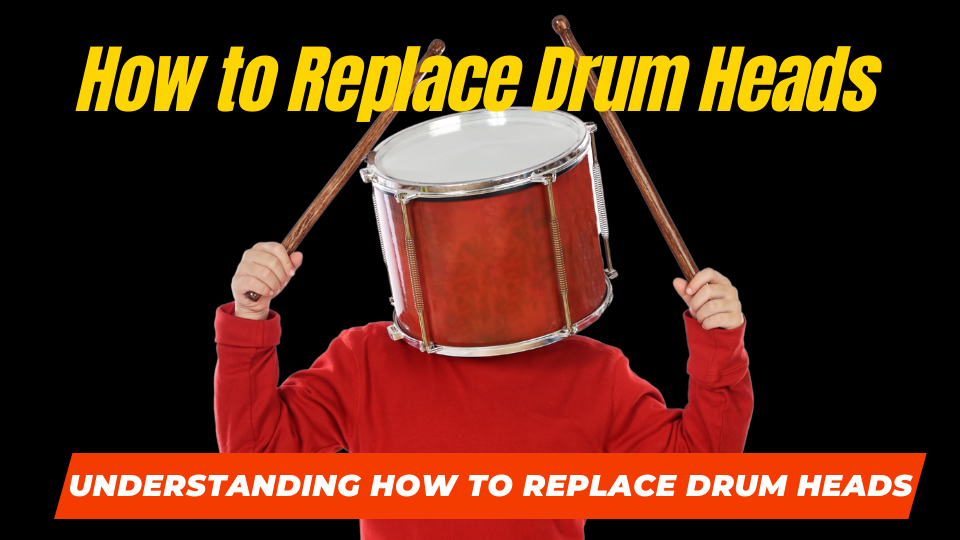
In the world of drumming, knowing how to replace drum heads is a fundamental skill. But before we delve into the actual replacement process, it’s important to recognize the signs that suggest your drum heads need changing.
If you’re like me, you might have first questioned this when your drums started to sound off, not as crisp or resonant as before. Drum heads, just like other components of a drum set, wear down over time, especially with regular use. Dents, pits, or wrinkles on the drum head surface, or an inability to stay in tune, can be clear indications that replacement is overdue.
Understanding when to replace drum heads also plays a key role. The timing can depend on various factors – how often you play, the style of music, and how hard you hit. As a general rule of thumb, with heavy playing, you might consider replacing your drum heads every six months to a year. On the other hand, with lighter, less frequent playing, a change every one to two years might be sufficient.
Remember, a timely replacement can make a world of difference to your drum’s sound quality. Now that you know the signs and timings, let’s move on to prepare for the replacement process.
Preparing to Replace Drum Heads
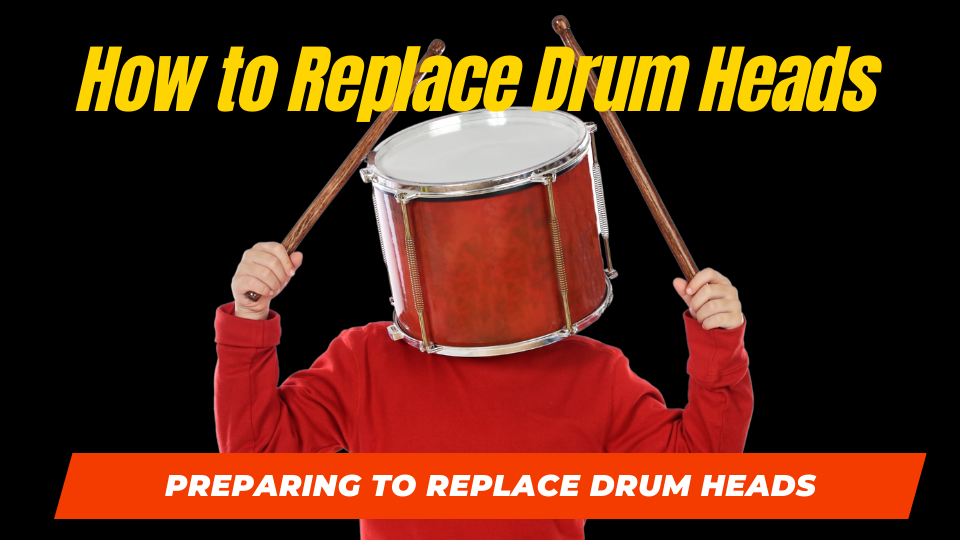
As we venture into the drum maintenance world, the importance of having the right tools and understanding the suitable drum heads for your style can’t be overstated.
Tools for Drum Head Replacement
Your tool kit for this task need not be elaborate. Your principal tool will be a drum key, a nifty piece of hardware crucial for loosening and tightening the tension rods on your drum. Some drummers may also find value in a drum tuning device, aiding in precise tuning. Lastly, keep a soft cloth on hand, useful for cleaning the drum shell and bearing edges during the process.
Choosing the Right Drum Heads
Drum heads aren’t a one-size-fits-all deal. These come in diverse types, each with its unique tone and feel. From coated heads and clear heads to single-ply or double-ply, the drum head you choose will play a pivotal role in shaping your drum sound. Keep in mind your music genre, drumming technique, and individual sound preferences when deciding.
With the appropriate tools and knowledge of what drum head suits you, you’re ready to plunge into the replacement process. Ready to roll up those sleeves?
Step-by-Step Guide on How to Replace Drum Heads
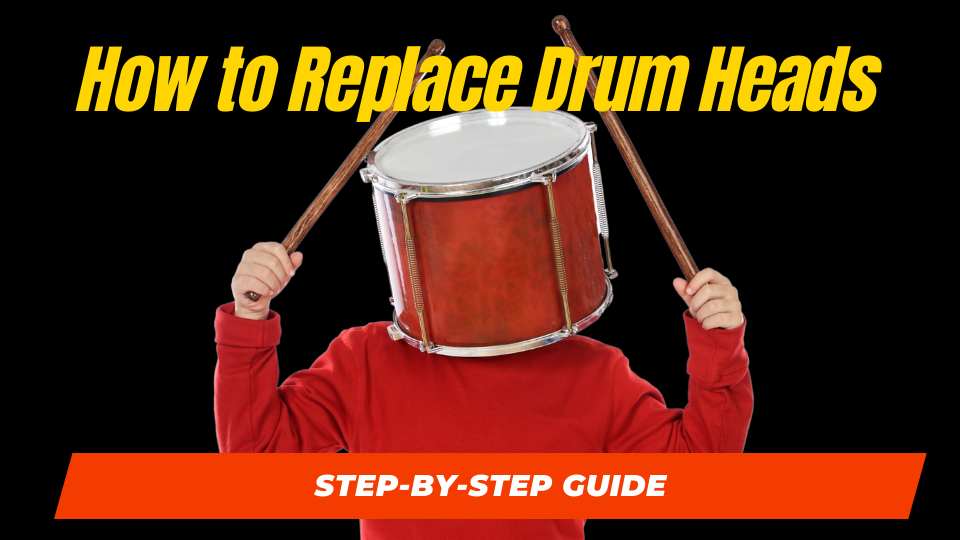
Now that you’re prepped and primed, it’s time to dive into the actual drum head replacement process. Let’s break it down into manageable steps for a smooth, efficient experience.
Drum Head Removal
The first step in the journey of giving your drum a new ‘skin’ is removing the old one. Use your drum key to gradually loosen the tension rods surrounding the drum head. Start from one and move to the one directly opposite to maintain even tension. Once all rods are loose, you can easily lift the drum head off the shell. This is also an excellent time to clean any accumulated dust or grime on your drum shell and bearing edges with your soft cloth.
Installing the New Drum Head
With the old drum head out of the way, it’s time to introduce the new one. Place the new drum head on the drum, ensuring it sits flush with the shell. Next, position the drum rim over the head, aligning the holes in the rim with the lugs on the drum.
Now, insert the tension rods into the lugs, finger-tightening them until they’re just snug. Once all rods are in place, use your drum key to tighten each rod a quarter or half turn. Remember the opposite pattern you used during removal? Apply it here too for even tension.
Fine-tuning Your Drum Heads
Once your drum head is installed and tensioned, it’s time to fine-tune it to your preferred pitch. Starting at one tension rod, tap near the rim with your drumstick while pressing the center of the drum head with your finger. Listen to the pitch. Repeat this process around the drum, adjusting the tension rods until you achieve a consistent pitch all around. This ensures optimal drum sound quality and is a critical part of the drum head replacement process.
And there you have it—a rejuvenated drum with a brand-new head! Drum head replacement can seem a daunting task initially, but with practice and patience, it becomes a routine part of your drum maintenance. The reward is a drum that sounds as good as new, ready to accompany you on your musical journey.
Troubleshooting Issues When Replacing Drum Heads
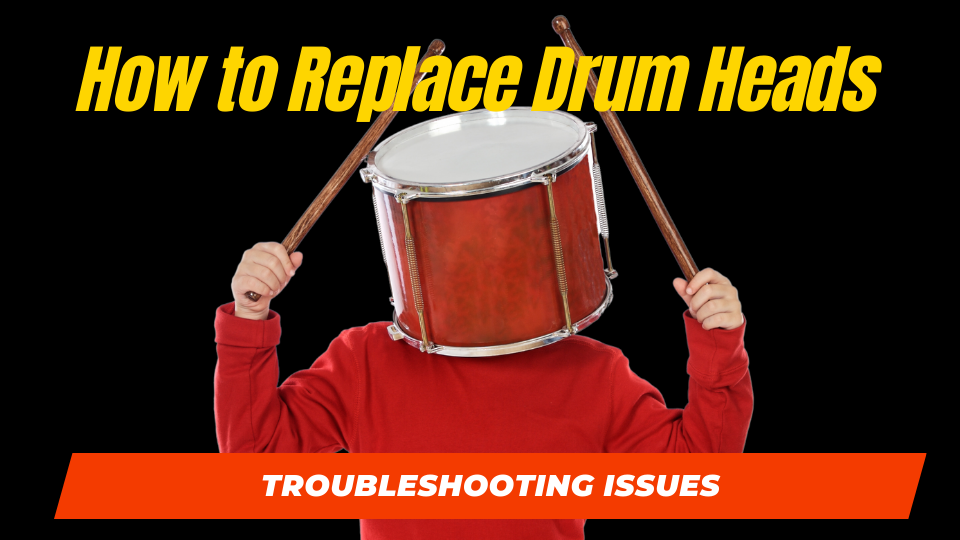
Even the most meticulous drummers can encounter problems during the head replacement process. Don’t worry—these issues are generally easy to resolve. Here are a few common ones:
Drum Head Doesn’t Fit
If your new drum head seems too tight or too loose, you might have purchased the wrong size. Double-check the diameter of your drum and compare it to the size of your new head. Remember, a correctly-sized drum head is essential for optimal sound production.
Uneven Tension
If you’ve tuned your drum and it still doesn’t sound right, you could be dealing with uneven tension. This can happen when the tension rods aren’t tightened evenly across the drum head. Try loosening and then re-tightening each rod in a star pattern, ensuring even tension.
Fine-Tuning Difficulties
Fine-tuning your drum head may take a few tries, so don’t get discouraged if you don’t get it perfect on the first go. Be patient with the process, and remember that learning how to properly tune your drum will improve your overall drumming experience.
Maintenance After Replacing Drum Heads
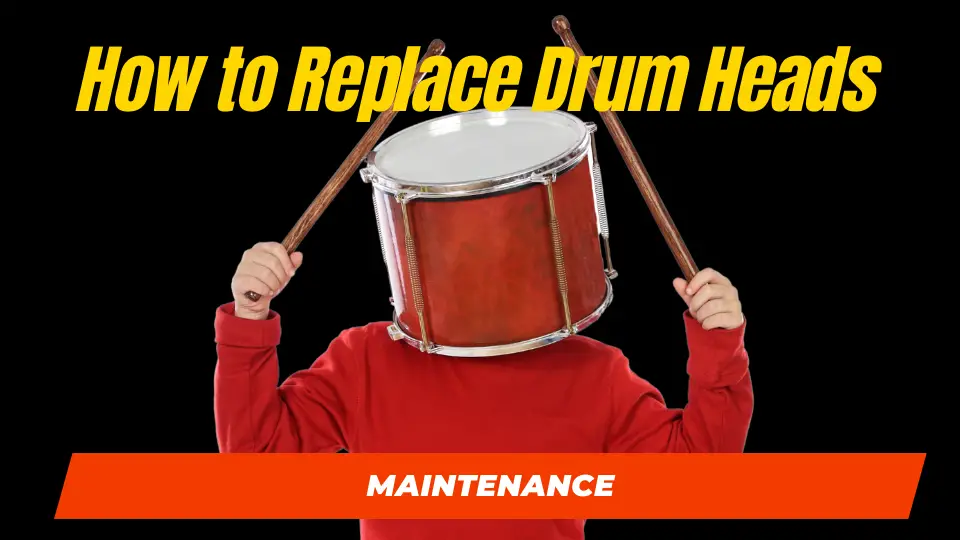
Taking good care of your drum heads can extend their life and maintain their sound quality. Here are some tips to ensure they stay in tip-top shape:
Keep them Clean
Regular cleaning can prevent build-up of dust and grime which can dampen your drum’s sound. Use a soft cloth to gently wipe your drum heads after each use.
Store Properly
If you’re not using your drums, cover them or store them in a temperature-controlled environment to protect them from dust and weather-related damage.
Regular Tuning
Maintaining a consistent tuning habit keeps your drums sounding great and can prevent premature wear and tear. But remember, excessive tightening can damage the drum head, so be gentle!
By observing these maintenance tips, you can keep your drum heads sounding their best for longer and save on replacement costs in the long run.
Recommended Brands for Drum Head Replacement

When it comes to buying new drum heads, you’re spoiled for choice. But to make your selection process easier, I’ll share some of the brands that have impressed me the most with their quality and durability.
Top Drum Head Brands
Remo has a wide variety of drum heads to choose from, all of which deliver superb sound quality. Their Ambassador series is particularly well-regarded in the drumming community.
Evans is another brand that stands out. They’re known for their innovative design, particularly their Level 360 Technology which promotes easy tuning and enhanced performance.
Essential Drum Accessories
A drum tuning key is a must-have for every drummer. It allows you to adjust the tension of your drum heads, enabling you to fine-tune your drum’s sound. I recommend the Tama OTK10 Drum Key for its durability and precision.
Investing in a drum head cleaning kit can also be beneficial. Not only does it help maintain the longevity of your drum heads, but it can also enhance their sound. The MusicNomad Drum Detailer is a great choice.
Remember, quality drum heads and accessories can greatly improve your drumming experience, so choose wisely!
Also read Recording Drums in a Basement
Conclusion
We’ve come a long way in our drum head journey, exploring the signs that signal a need for replacement, the tools needed, and the process itself. We’ve also considered the art of fine-tuning your drum heads and the common challenges that you might face. Keeping your drum heads in prime condition is an integral part of being a drummer, impacting the quality of your sound and your overall drumming experience. Remember, regularly replacing and maintaining your drum heads isn’t just a chore, it’s an investment in your craft. Keep these tips and guidelines in mind as you continue to create beautiful rhythms. Happy drumming!

